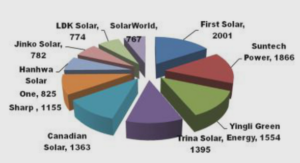Mémoire online identification of nonlinear systems in acoustics, tutoriel & rapport PDF.
CHAPTER 1: Introduction
Study of the behavior of physical systems usually begins with a basic modeling process. The demands on more detailed study of physical phenomena governing this behavior leads generally to more complicated models that can be useful for a better understanding of the system and for a prediction or a simulation of its behavior. The procedure allowing the derivation of mathematical tools and algorithms to build a model is called system identification.
Each identification process consists of several steps. First of all, a simple analysis of the system is recommended, examining the basic properties of the system.
Then, based on this information about the system, a model or a structure representing the system can be chosen. The choice of an appropriate model is a very important step and it is very often a compromise between accuracy and simplicity. In practice, a very accurate model (with the smallest error) is not always preferred if its complexity is too high. Next step is the estimation of the model parameters from the measurement. Finally, the validity of the estimated model should be tested. The validation can indicate whether the model describes the system properly or not.
Physical systems can be separated into two distinct classifications: linear systems and nonlinear systems. As a symptom of nonlinearity, the output of a nonlinear system generally exhibits distortions. Encyclopedia Britannica defines the distortion as any change in a signal that alters the basic waveform or the relationship between various frequency components and adds that it is usually a degradation of the signal. Distortion is usually unwanted, even if in some cases, (such as electric guitar where distortion is often induced purposely to achieve an aggressive sound), it can be desirable.
Regarding the consequences of nonlinearity on system behavior, two types of distortion are usually distinguished: harmonic distortion and intermodulation distortion. When exciting a system with an input sine-wave signal of frequency f, the harmonic distortion corresponds to components of output signal at frequencies which are integer multiples of f. When exciting a system with an input signal made of two sine-waves having different frequencies f01 and f, the intermodulation distortion corresponds to the components having frequency values that are linear combinations of f1 or f2, such as f1−f2, f1+f2, 2f1−f22, . . . If the system produces at least one of these two effects (in general both of them), it is considered to be nonlinear.
The very general definition of a nonlinear system states that the output of the system does not depend linearly on the input. In other words, the system property does not meet at least one of the linearity principles: (a) additivity and (b) homogeneity. The system obeys the principle of additivity if the response caused by two or more different signals is the sum of the individual responses of each signal. The system obeys the principle of homogeneity if the output signal corresponding to an attenuated version of an input signal is also attenuated by the same attenuation factor.
There are a lot of everyday life examples, where a nonlinear system is considered to be a linear one. For example, in catalogue files or magazine tests, a system (as a loudspeaker for example) can be seen as a linear one (when presenting the linear transfer function) and, at the same time, a nonlinear one (when presenting the total distortion coefficient). Since the theory of nonlinear systems is generally complex, the nonlinear systems are usually represented by approximated linear models. Thus, the distortion is often a priori considered to be low enough, in order to be neglected. In the worst case, the presence of nonlinear distortions is disregarded completely. This can be an important source of error when modeling the system under test, because of involuntary usage of an invalid model.
…………





